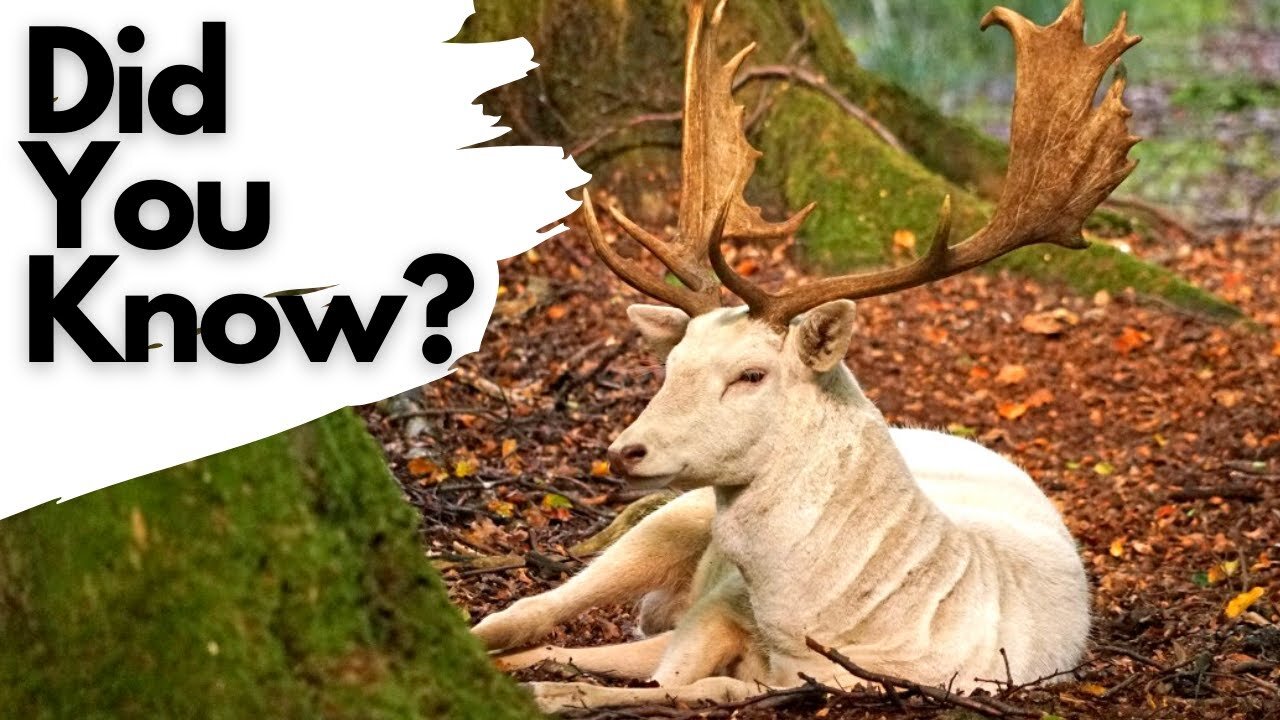Premium Only Content

Things you need to know about FALLOW DEER!
Description:
Fallow deer (Dama dama) are a species of elegant and graceful deer known for their distinctive coat patterns and impressive antlers. Native to Eurasia, these herbivorous mammals have been introduced to various parts of the world for ornamental and hunting purposes. Fallow deer exhibit sexual dimorphism, with males, known as bucks, displaying larger and more intricate antlers compared to females, called does. Their adaptable nature allows them to thrive in diverse habitats, including forests, grasslands, and even urban areas.
Key Features:
Distinctive Coat Patterns: Fallow deer showcase a variety of coat colors, including shades of brown, white, and black. The most characteristic feature is the presence of white spots on their backs.
Antler Variation: Bucks grow antlers that are palmate, broad, and shovel-shaped, with multiple tines. The antlers are shed annually and regrown, with each set becoming larger as the buck matures.
Social Behavior: Fallow deer are social animals and form groups called herds. These herds are often segregated by gender, with bucks forming separate bachelor groups outside the mating season.
Vocalizations: Communication among fallow deer involves a range of vocalizations, including grunts, bleats, and barks. These sounds are used for signaling danger, attracting mates, or maintaining social cohesion within the herd.
Feeding Habits: Fallow deer are herbivores with a diverse diet, consuming grasses, leaves, fruits, and even fungi. Their adaptable diet contributes to their ability to thrive in various environments.
Conservation and Management:
While fallow deer are not considered endangered, their populations are managed to prevent overpopulation and mitigate potential negative impacts on ecosystems. Conservation efforts also focus on preserving genetic diversity within populations and maintaining the ecological balance in areas where they have been introduced.
Hashtags:
#FallowDeer #WildlifeConservation #DeerSpecies #NaturePhotography #AntlerMagic #EurasianWildlife #Biodiversity #AnimalBehavior #Herbivores #WildlifeAdaptation
-
 20:03
20:03
Sideserf Cake Studio
8 hours agoA HUNGRY HUNGRY HIPPOS CAKE THAT ACTUALLY WORKS?
5461 -
 23:51
23:51
marcushouse
8 hours ago $0.05 earnedStarship’s Next Move Is Coming Sooner Than You Think!
1082 -
 22:24
22:24
The Finance Hub
14 hours ago $0.03 earnedBREAKING: JOE ROGAN JUST DROPPED A MASSIVE BOMBSHELL!!!
682 -
 55:02
55:02
PMG
4 hours ago $0.03 earnedHannah Faulkner and Miriam Shaw | Moms on A Mission
193 -
 1:21:05
1:21:05
I_Came_With_Fire_Podcast
16 hours ago"Veteran Health, Military Culture, and American Exceptionalism" with Matt Kenney
65.5K15 -
 23:21
23:21
Simply Bitcoin
1 day ago $33.02 earned$1M Bitcoin in 2025? | Trump's Plan to End the Fed Revealed!
156K60 -
 17:19
17:19
SLS - Street League Skateboarding
17 days agoTop Moments from the Men’s Super Crown Final! Nyjah Huston, Giovanni Vianna and Gustavo Ribeiro 👑
88.6K -
 LIVE
LIVE
Major League Fishing
3 days agoLIVE! - Bass Pro Tour: Stage 1 - Day 3
290 watching -
 47:00
47:00
vinndoggradiousa
5 days agoBYE LEGACY MEDIA guest/ Sam Anthony of YourNews.com
19.4K2 -
 13:55
13:55
Clownfish TV
18 hours agoOrcs REMOVED from Dungeons & Dragons New Monster Manual?!
32.5K16